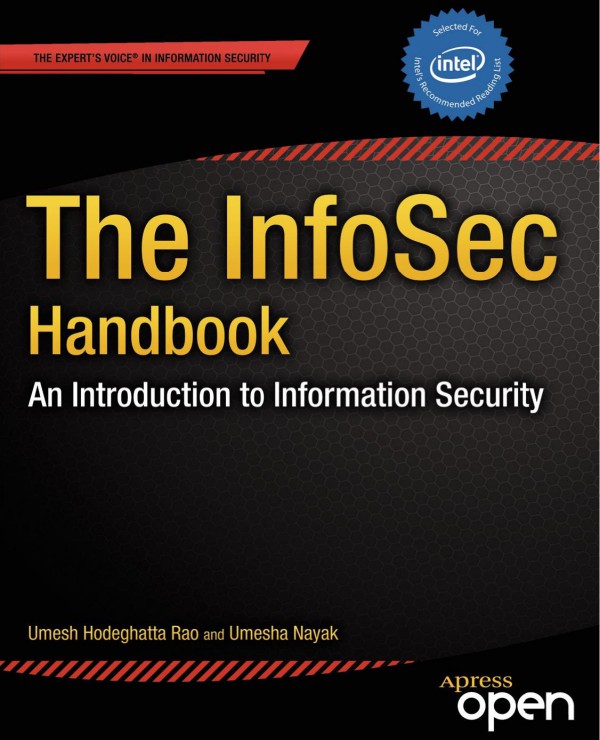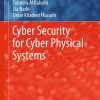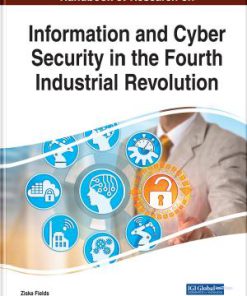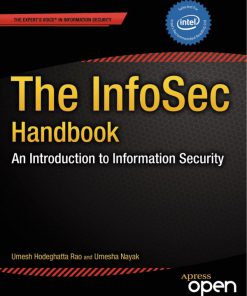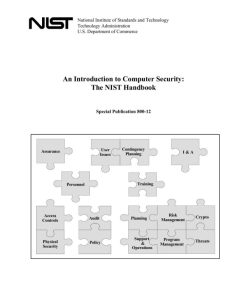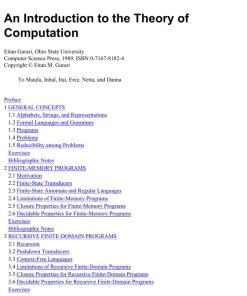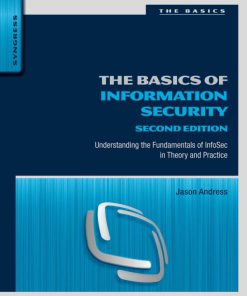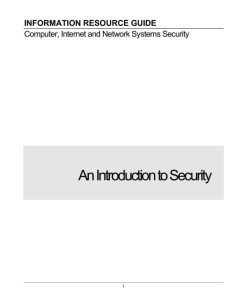The Infosec Handbook an introduction to information security 1st edition by Umesha Nayak, Umesh R Hodeghatta ISBN 1430263822 Â 978-1430263821
$50.00 Original price was: $50.00.$25.00Current price is: $25.00.
Authors:Umesh Hodeghatta Rao , Series:Computer Science [186] , Author sort:Rao, Umesh Hodeghatta , Languages:Languages:eng , Published:Published:Sep 2014 , Publisher:Apress
The Infosec Handbook an introduction to information security 1st edition by Umesha Nayak, Umesh R Hodeghatta – Ebook PDF Instant Download/Delivery. 1430263822 978-1430263821
Full download The Infosec Handbook an introduction to information security 1st edition after payment
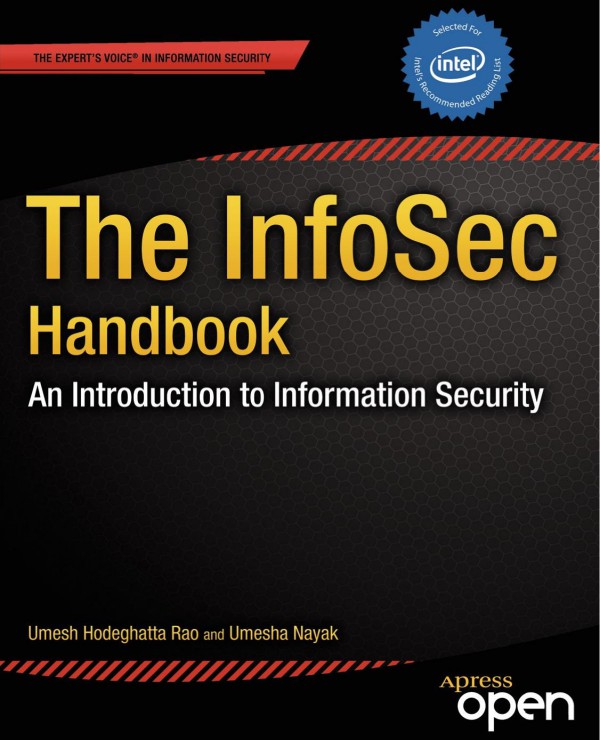
Product details:
ISBN 10: 1430263822
ISBN 13: 978-1430263821
Author: Umesha Nayak, Umesh R Hodeghatta
The InfoSec Handbook offers the reader an organized layout of information that is easily read and understood. Allowing beginners to enter the field and understand the key concepts and ideas, while still keeping the experienced readers updated on topics and concepts.
It is intended mainly for beginners to the field of information security, written in a way that makes it easy for them to understand the detailed content of the book. The book offers a practical and simple view of the security practices while still offering somewhat technical and detailed information relating to security. It helps the reader build a strong foundation of information, allowing them to move forward from the book with a larger knowledge base.
Security is a constantly growing concern that everyone must deal with. Whether its an average computer user or a highly skilled computer user, they are always confronted with different security risks. These risks range in danger and should always be dealt with accordingly. Unfortunately, not everyone is aware of the dangers or how to prevent them and this is where most of the issues arise in information technology (IT). When computer users do not take security into account many issues can arise from that like system compromises or loss of data and information. This is an obvious issue that is present with all computer users.
This book is intended to educate the average and experienced user of what kinds of different security practices and standards exist. It will also cover how to manage security software and updates in order to be as protected as possible from all of the threats that they face.
The Infosec Handbook an introduction to information security 1st Table of contents:
Preface
- Introduction to the Handbook
- How to Use This Book
- Target Audience and Prerequisites
- A Brief History of Information Security
Part 1: Foundations of Information Security
Chapter 1: Introduction to Information Security
- What is Information Security?
- The CIA Triad: Confidentiality, Integrity, and Availability
- Information Security Principles and Concepts
- Key Terminology in Information Security
Chapter 2: The Importance of Information Security
- Why Information Security Matters
- The Business Case for Information Security
- The Impact of Cyber Attacks and Data Breaches
- Legal and Regulatory Considerations
Chapter 3: Understanding Risk Management
- What is Risk Management in Information Security?
- Identifying and Assessing Security Risks
- Risk Mitigation Strategies
- Risk Frameworks (e.g., NIST, ISO 27001)
- The Role of the Risk Management Process
Part 2: Core Information Security Domains
Chapter 4: Network Security
- The Basics of Network Security
- Firewalls, Intrusion Detection, and Prevention Systems
- Virtual Private Networks (VPNs)
- Securing Wireless Networks
- Network Segmentation and Architecture
Chapter 5: Cryptography and Encryption
- Introduction to Cryptography
- Types of Encryption: Symmetric and Asymmetric
- Public Key Infrastructure (PKI)
- Digital Signatures and Certificates
- Cryptographic Protocols (SSL/TLS, IPSec)
Chapter 6: Security Operations
- Security Operations and Incident Response
- Monitoring and Logging for Security Events
- Incident Response Lifecycle
- Handling Data Breaches and Forensics
- Security Operations Centers (SOCs)
Chapter 7: Identity and Access Management (IAM)
- The Importance of IAM
- Authentication Methods (Passwords, Biometrics, Multi-Factor Authentication)
- Access Control Models (RBAC, ABAC, MAC)
- Privilege Management and Least Privilege Principle
- IAM Technologies and Solutions
Chapter 8: Endpoint Security
- Protecting Endpoints (Desktops, Laptops, Mobile Devices)
- Antivirus, Anti-malware, and Anti-spyware Solutions
- Device Encryption and Remote Wipe
- Security for Bring Your Own Device (BYOD)
- Endpoint Detection and Response (EDR)
Part 3: Advanced Topics in Information Security
Chapter 9: Application Security
- Securing Web Applications
- Common Web Application Vulnerabilities (SQL Injection, XSS, CSRF)
- Secure Software Development Lifecycle (SDLC)
- Secure Coding Practices
- Application Security Testing and Tools
Chapter 10: Cloud Security
- The Basics of Cloud Computing and Security Challenges
- Shared Responsibility Model in Cloud Security
- Securing Cloud Infrastructure and Services (IaaS, PaaS, SaaS)
- Cloud Encryption and Key Management
- Cloud Security Best Practices
Chapter 11: Mobile Security
- Security Challenges in Mobile Devices
- Mobile Malware and App Security Risks
- Mobile Device Management (MDM) Solutions
- Securing Mobile Applications
- Best Practices for Mobile Security
Chapter 12: Security Auditing and Compliance
- The Role of Auditing in Information Security
- Common Security Standards and Frameworks (PCI DSS, HIPAA, GDPR)
- Auditing and Monitoring Techniques
- Compliance Requirements and Best Practices
- Third-Party Risk Management
Part 4: Emerging Trends and Future Directions
Chapter 13: Cyber Threat Intelligence and Attack Defense
- Understanding Cyber Threat Intelligence (CTI)
- Types of Cyber Threats: Malware, Phishing, APTs, etc.
- Threat Intelligence Lifecycle and Sharing
- Cyber Attack Defense Strategies
- Building a Threat Intelligence Program
Chapter 14: Security in the Internet of Things (IoT)
- The Security Risks of IoT
- Securing IoT Devices and Networks
- IoT Protocols and Encryption Techniques
- Managing Large-Scale IoT Deployments Securely
- Future of IoT Security
Chapter 15: Artificial Intelligence and Machine Learning in Security
- The Role of AI and ML in Information Security
- AI for Threat Detection and Incident Response
- Using Machine Learning for Security Analytics
- Automating Security with AI and ML
- Ethical Considerations in AI and Security
Part 5: Building a Career in Information Security
Chapter 16: Becoming an Information Security Professional
- Skills and Knowledge Required for a Career in Infosec
- Key Certifications in Information Security (CISSP, CEH, CompTIA Security+)
- Career Pathways and Opportunities in Infosec
- Networking and Continuing Education in the Information Security Field
Chapter 17: Building a Security Program
- How to Build a Security Program from Scratch
- Defining Policies and Procedures
- Integrating Security into Business Processes
- Security Metrics and KPIs for Tracking Effectiveness
- Building a Security Culture in the Organization
Conclusion
- Recap of Key Concepts in Information Security
- Future Challenges and Trends in Infosec
- How to Stay Current in the Field of Information Security
Appendices
- A. Glossary of Information Security Terms
- B. Tools and Resources for Information Security Professionals
- C. List of Security Frameworks and Standards
- D. Further Reading and Online Resources
References
Index
People also search for The Infosec Handbook an introduction to information security 1st:
introduction of information security
5 principles of information security
what are the main components of information security
the infosec handbook an introduction to information security pdf
the infosec institute
You may also like…
eBook PDF
Computer Science Press An Introduction to the Theory of Computation 1st Edition by Eitan Gurari ISBN

